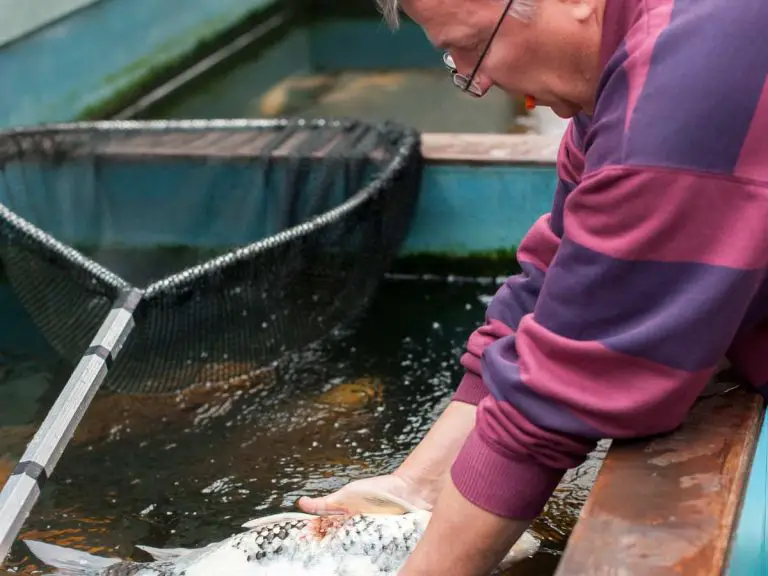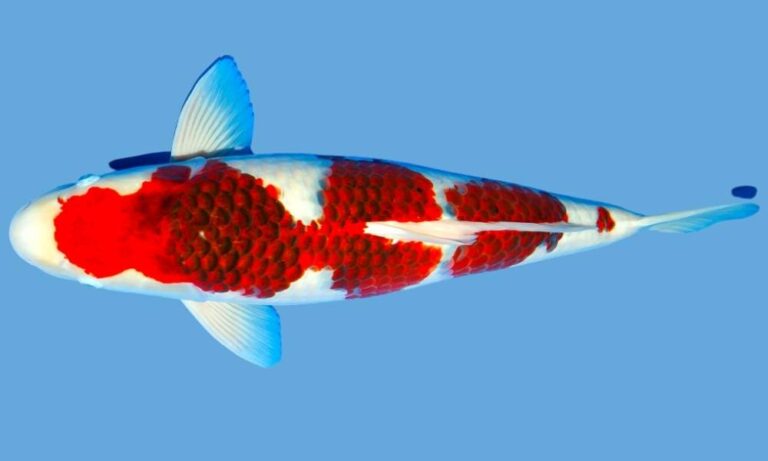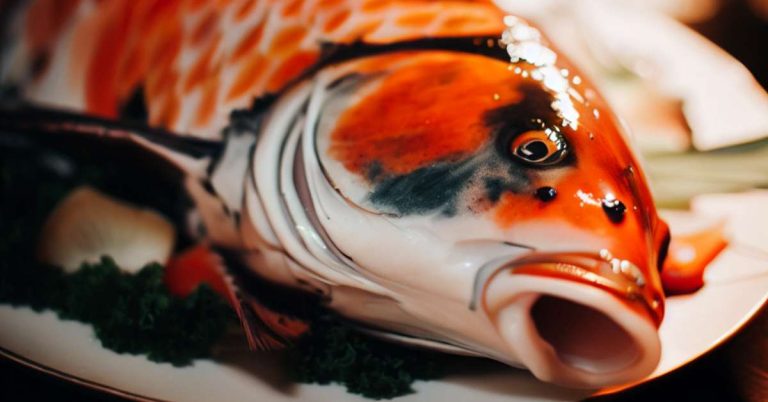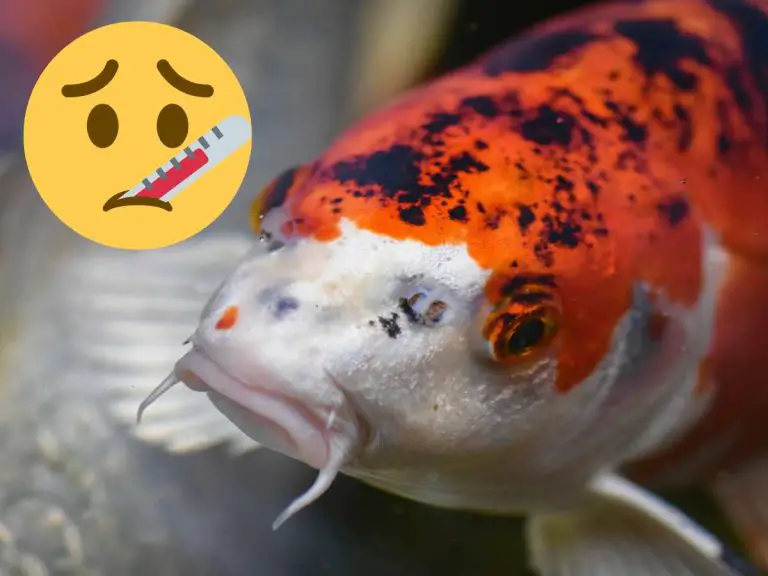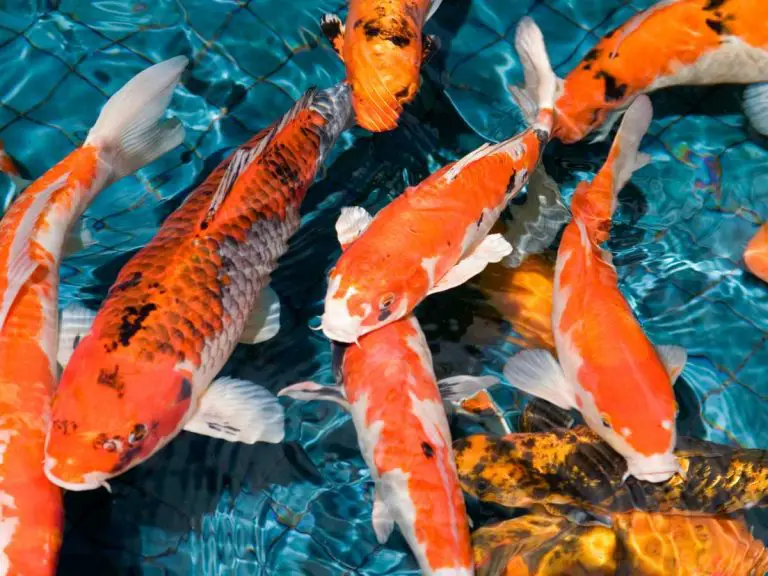Do Koi Eat Tadpoles? How (and why) to Protect Your Tadpoles from Koi Fish
Do koi eat tadpoles? And can you prevent it?
Yes, koi fish can and do eat tadpoles. Opportunistic eaters, these fish have a natural inclination to feast on small prey like tadpoles. That said, pond owners can easily prevent this from happening by following some best practices.
So fear not, my fellow pond enthusiasts, because in this article we’re covering strategies you can implement to safeguard your little tadpoles. This valuable information will help you keep your tadpoles safe while also protecting your investment in koi fish.
So let’s dive in (pun intended) and discover the secrets to preventing koi from turning your tadpoles into a tasty snack.
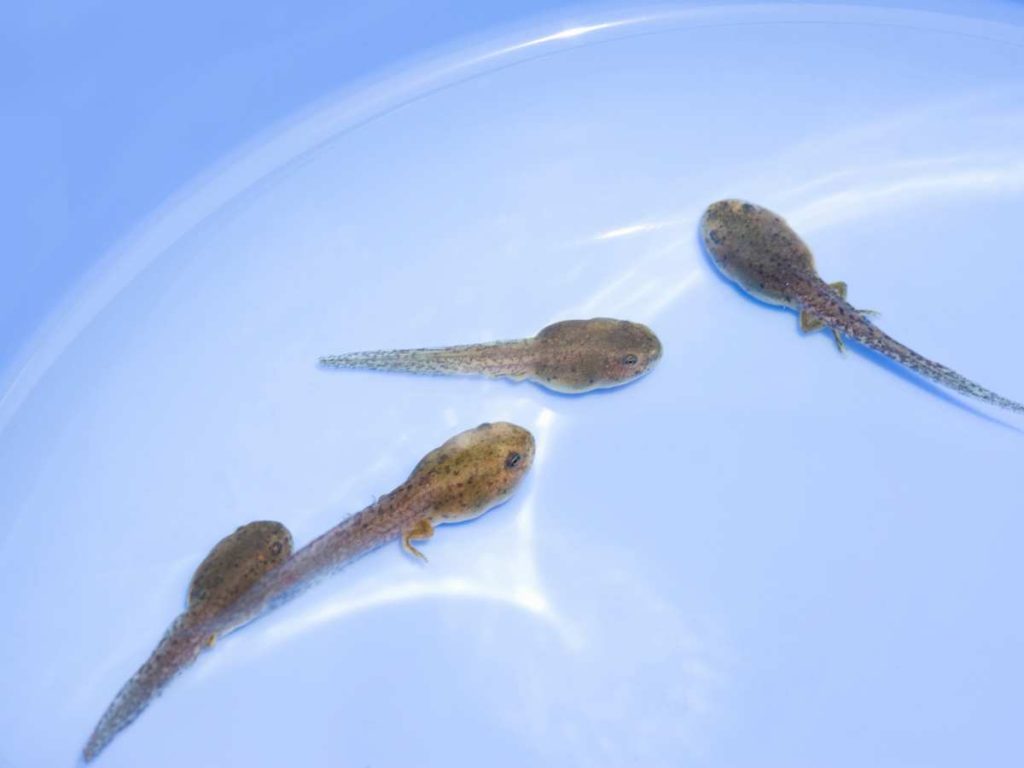
Understanding koi fish behavior
Koi fish are quite fascinating creatures. They’re considered opportunistic feeders, which means they’re always on the lookout for their next meal. It’s like they have an insatiable appetite, and they’re not picky eaters. Give them something small and edible, and they’ll gobble it up in no time.
One thing you need to know about koi fish is that they have a natural tendency to go after small prey. They’re like little predators in a pond, constantly scanning for any signs of movement. So if there are tadpoles swimming around, they can easily become a tasty snack for our koi friends. And that can be a problem if you were hoping to use tadpoles/frog as koi pond mates.
Koi feeding behavior can be influenced by environmental factors. If there’s a lot of food available for them, they might not be as inclined to go after tadpoles. But if they’re feeling a bit hungry and tadpoles are the only option around, well, you can bet they’ll go for it.
The threat posed by koi fish to tadpole survival
Koi fish can pose a significant threat to the survival of tadpoles. These beautiful and seemingly harmless fish have a natural tendency to eat small prey, including tadpoles. This behavior can have negative consequences for tadpole populations, both in koi ponds and natural bodies of water where koi are present.
When introduced into koi ponds, tadpoles face potential harm from the resident koi. Koi have strong jaws and sharp teeth that can easily crush and consume tadpoles. This can lead to a significant reduction in tadpole numbers and hinder their development into adult frogs. Tadpoles may also become stressed or injured in their attempts to escape from the predatory advances of koi fish.
Risks are not limited to koi ponds alone. The presence of koi fish in natural bodies of water can also have negative effects on tadpole populations. Koi are known to disturb the water and sediments, which can disrupt tadpole habitats and affect their ability to find food and avoid predators. Additionally, the aggressive feeding behavior of koi can cause competition for food resources, further threatening tadpole survival.
Risks of introducing tadpoles into established koi habitats
Introducing tadpoles into established koi habitats can also be risky. Koi are territorial and may view tadpoles as potential prey or competitors for resources. Tadpoles introduced into koi ponds may be swiftly consumed by the resident koi, eliminating any chance of survival. It is crucial to consider the existing ecosystem and dynamics before introducing tadpoles into koi habitats.
Negative effects on tadpole populations in natural bodies of water with koi presence
The presence of koi fish in natural bodies of water can have detrimental effects on tadpole populations. Koi can disrupt tadpole habitats by stirring up sediments and creating turbid water conditions. This can hinder tadpoles’ ability to find food and evade predators. Additionally, the aggressive feeding behavior of koi fish can lead to increased competition for resources, limiting the survival and growth of tadpoles. It is essential to manage the presence of koi in natural bodies of water to protect tadpole populations and maintain overall ecosystem health.
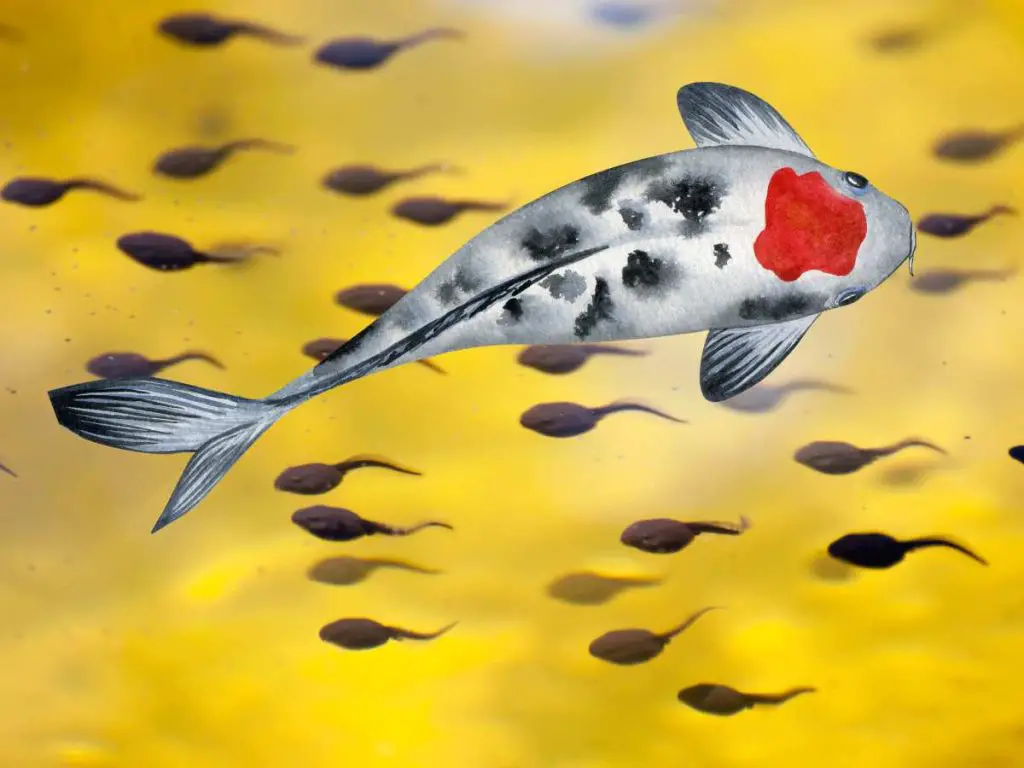
3 Effective methods to safeguard tadpoles from koi fish
Koi fish have a natural tendency to gobble up tadpoles, but don’t fret! There are several effective methods to protect those precious little amphibians from becoming a piscine feast.
1. Physical barriers to prevent koi access to tadpole areas
One nifty way to keep those sneaky koi away from tadpoles is by installing mesh fences or netting around the tadpole habitat. These barriers will act as a fortress, safeguarding tadpoles from any koi invasion. It’s like having your own little tadpole sanctuary!
2. Creating specific areas for tadpoles away from koi fish
Show those koi who’s boss by giving tadpoles their very own separate section within the pond. By designating a special tadpole habitat, you’ll ensure that koi and tadpoles keep their distance. It’s like the ultimate separation of powers!
3. Natural deterrents to discourage koi from approaching tadpoles
Plants are not only lovely to look at, but they can also act as a barrier between koi and tadpoles. By planting dense vegetation around tadpole areas, you’ll create a natural shield that koi won’t want to mess with. It’s like a green fortress for the tadpoles!
Table: Methods to Safeguard Tadpoles from Koi Fish
| Method | Description |
|---|---|
| Physical Barriers | Install mesh fences or netting around the tadpole habitat to prevent koi access. |
| Designated Tadpole Areas | Create separate sections within the pond specifically for tadpoles, away from koi fish. |
| Natural Deterrents | Plant dense vegetation around tadpole areas to act as a natural shield against koi. |
| Balanced Koi Diet | Feed koi a variety of foods to reduce their tendency to prey on tadpoles. |
| Consistent Feeding Routine | Feed koi at the same time(s) each day to condition them for regular meals. |
| Separate Feeding Areas | Designate specific feeding areas for koi away from tadpole habitats. |
| Proper Pond Design | Create areas inaccessible to koi, such as shallow sections or separate compartments. |
| Regular Pond Maintenance | Clean the pond regularly to remove debris and organic matter that attracts koi. |
| Visual Deterrents | Use floating objects or reflective surfaces to confuse and deter koi. |
| Sound Deterrents | Implement underwater speakers or noise disturbances to startle koi when they approach tadpole areas. |
Feeding strategies to reduce koi predation on tadpoles
Koi fish require a balanced and nutritious diet to thrive, and providing them with sufficient food can help reduce their tendency to prey on tadpoles. Ensuring that your koi receive the nutrients they need is essential in deterring them from seeking out other sources of food, such as tadpoles.
One effective strategy is to ensure that your koi fish are receiving a well-rounded diet. This means incorporating a variety of foods, including commercially available koi pellets, live or frozen foods such as brine shrimp or bloodworms, and even fresh fruits and vegetables. By offering a diverse range of food options, you can help satisfy your koi’s dietary needs and decrease their desire to hunt for tadpoles.
Ensure koi receive a balanced and nutritious diet
Feeding your koi on a regular schedule can also help reduce their predation on tadpoles. By establishing a consistent feeding routine, you can condition your koi to expect regular meals, minimizing their need to seek out alternative food sources. It’s best to feed your koi at the same time(s) each day, providing them with enough food to satisfy their hunger without overfeeding them.
Establish feeding routines that reduce their need to prey on tadpoles
Additionally, consider the feeding location when implementing preventive measures. If you create specific feeding areas for your koi fish away from the tadpole habitats, they are less likely to come into contact with the tadpoles. This can be achieved by using separate sections within the pond or installing floating platforms or feeders away from the tadpole areas.
Remember, the goal is to ensure your koi fish are well-fed and satisfied, reducing their natural instinct to hunt for smaller prey like tadpoles. By implementing feeding strategies that address their nutritional needs and providing them with a consistent and separate feeding area, you can greatly minimize the chances of koi predation on tadpoles in your pond.
Other preventive measures to consider to protect your tadpoles
When it comes to keeping tadpoles safe from koi fish, there are some additional preventive measures that pond owners can take. These measures go beyond just physical barriers and feeding strategies, and can help create an environment that discourages koi from preying on tadpoles.
Proper pond design and structure to limit koi access to tadpoles
One effective way to prevent koi from reaching the tadpole habitat is to carefully design and structure the pond. By creating areas that are inaccessible to koi, such as shallow sections or separate compartments within the pond, you can provide a safe space for tadpoles to thrive without the threat of being eaten.
Regular pond maintenance to remove any potential attractants for koi
Koi fish are attracted to debris and organic matter in the water, so it’s important to regularly clean and maintain the pond to remove any potential attractants. Clearing debris and algae buildup not only helps keep the water quality high, but also reduces the likelihood of koi being drawn to tadpole areas.
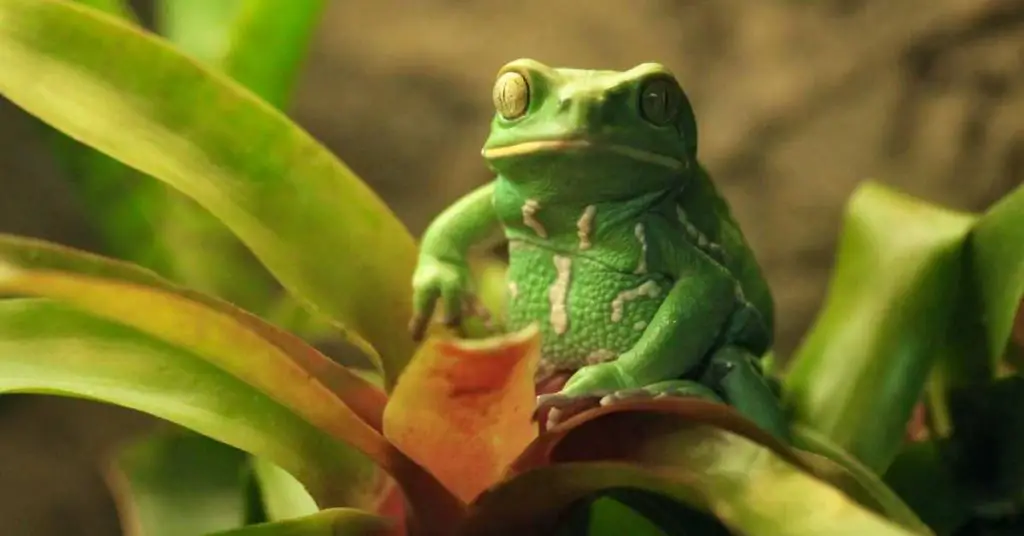
Techniques to deter koi fish from preying on tadpoles
In addition to physical barriers and regular maintenance, there are various techniques to further deter koi from preying on tadpoles.
One popular method is using visual deterrents, such as floating objects or reflective surfaces. These can confuse and deter koi from approaching tadpole areas, as they disrupt the visual cues that koi typically associate with prey.
Another option is implementing sound deterrents. Underwater speakers or noise disturbances can be created when koi approach tadpole areas, deterring them from getting too close. The unexpected noise can startle and discourage the koi from pursuing their predatory instincts.
By combining these preventive measures, pond owners can create an environment that is less attractive and accessible to koi fish, ultimately increasing the chances of tadpoles surviving and thriving in the pond.
Key takeaways
So, to wrap up everything we’ve discussed, koi fish do have a tendency to eat tadpoles. However, there are several methods you can employ to prevent this from happening and safeguard the survival of your tadpoles. Let’s quickly summarize the key points we’ve covered:
- Koi fish are opportunistic feeders, and their natural tendencies make them prone to eating small prey.
- Introducing tadpoles into established koi habitats can put them at risk, as koi may see them as food.
- Koi presence in natural bodies of water can negatively affect tadpole populations.
- Physical barriers, such as mesh fences or netting, can be installed to prevent koi from accessing tadpole areas.
- Designating separate sections within the pond for tadpoles and planting dense vegetation can create safe habitats away from koi fish.
- Feeding the koi a balanced and nutritious diet on a regular schedule can reduce their need to prey on tadpoles.
- Proper pond design and regular maintenance, including debris removal, can limit koi’s access to tadpoles.
- Visual and sound deterrents, such as floating objects, reflective surfaces, and underwater speakers, can discourage koi from approaching tadpoles.
By understanding koi behavior and implementing these preventive measures, you can ensure the well-being of both your koi fish and tadpoles. So go ahead and create a harmonious pond that allows both species to thrive!
Related Questions
Can tadpoles survive in a pond with koi fish?
While it is possible for tadpoles to survive in a pond with koi fish, there is a risk of predation. Koi fish have a natural tendency to eat small prey, including tadpoles. To increase the chances of tadpole survival, it is important to take preventive measures such as creating physical barriers, providing separate habitat areas, and implementing feeding strategies for the koi fish. By understanding koi behavior and implementing these measures, it is possible to create a suitable environment for both koi fish and tadpoles.
Are there any natural alternatives to prevent koi from eating tadpoles?
Yes, there are natural alternatives to deter koi from eating tadpoles. One effective method is to plant dense vegetation as a barrier between the koi and tadpoles. This creates a physical obstacle and reduces visibility, making it less likely for koi to approach tadpole areas. Additionally, installing visual deterrents such as floating objects or reflective surfaces can also help deter koi from preying on tadpoles. By combining these natural deterrents with other preventive measures, it is possible to create a pond environment that minimizes the risk of koi predation on tadpoles.

